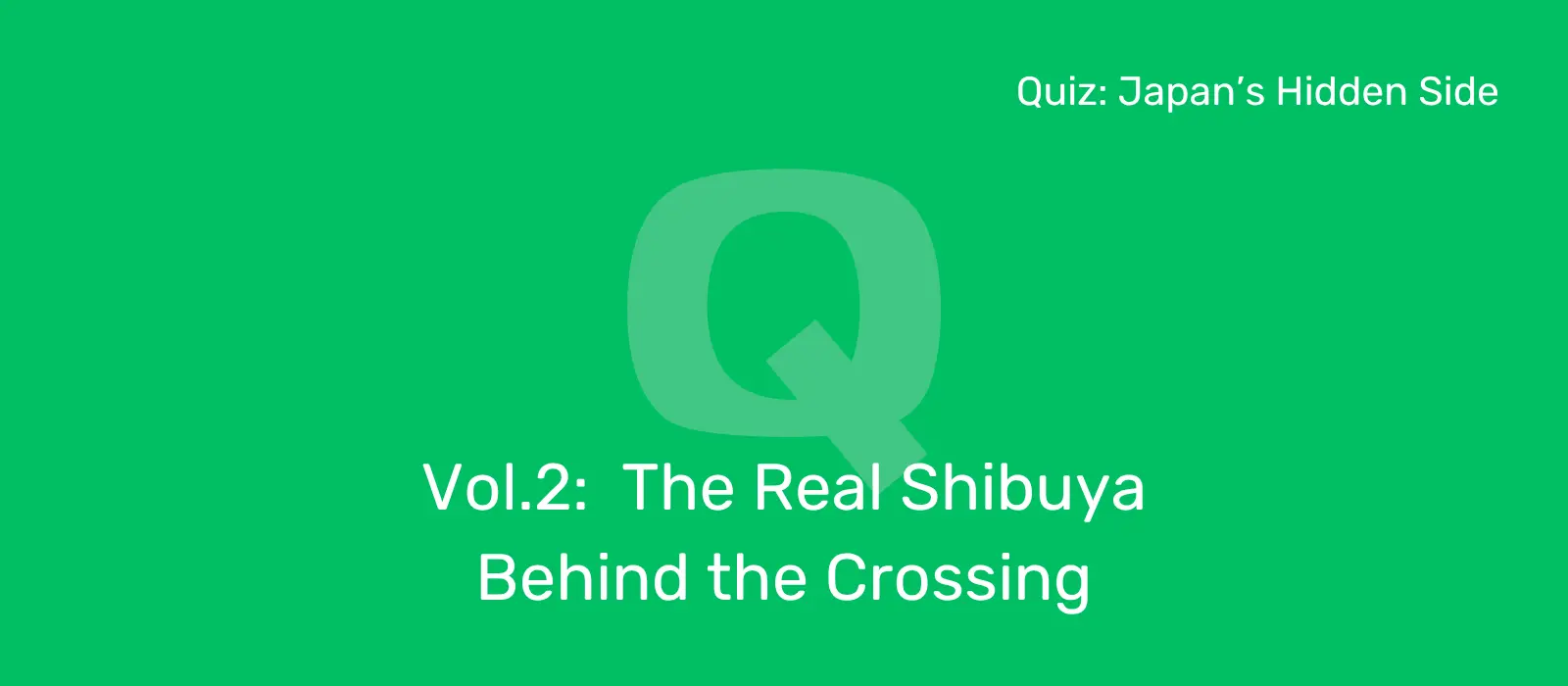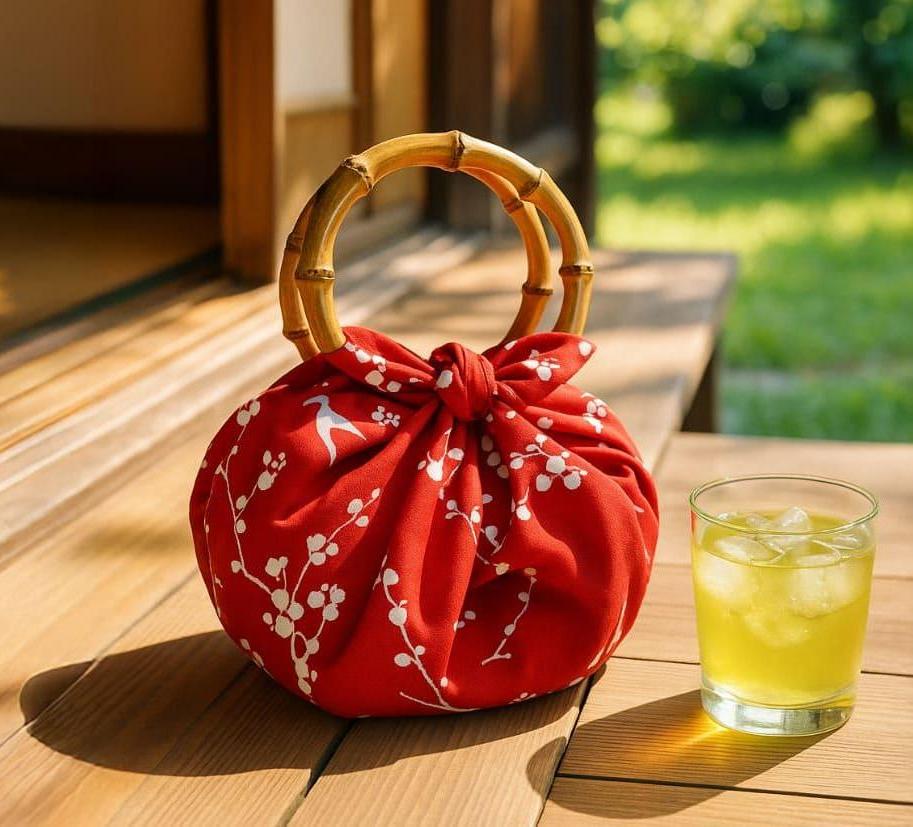The second volume of Japan’s Hidden Side Quiz takes you to Shibuya —
a place where chaos itself has become culture.
What lies beneath one of the world’s busiest crossings?
What secret hides behind the statue of the loyal dog, Hachikō?
Once the center of Japan’s youth culture,
Shibuya has evolved into a city where old stories and neon lights coexist.
Step behind the noise of the scramble.
How much do you really know about Shibuya?
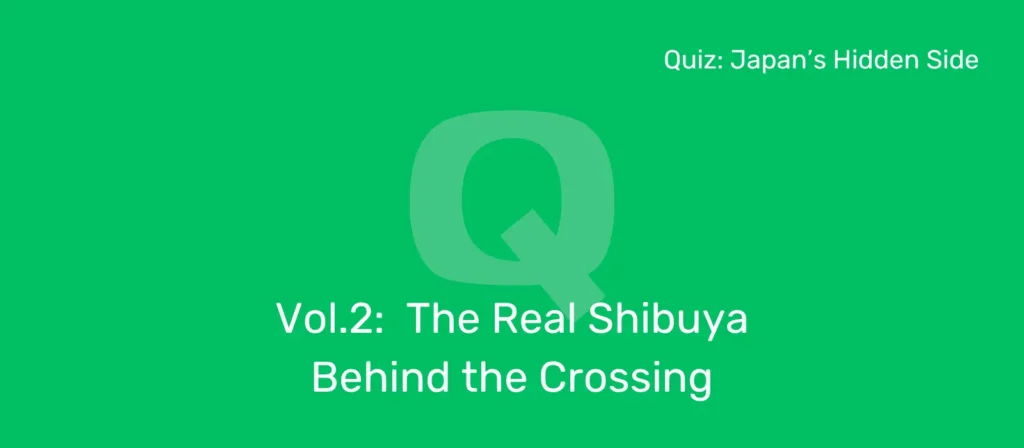
1. 5 Clues to the Real Shibuya
Q1: A Gathering of Superhumans?
The Shibuya Scramble Crossing is famous for its sea of people —
but how many pedestrians actually cross it in a single green light?
(Difficulty: ★★☆☆☆)
- About 3,000
- About 10,000
- About 120,000
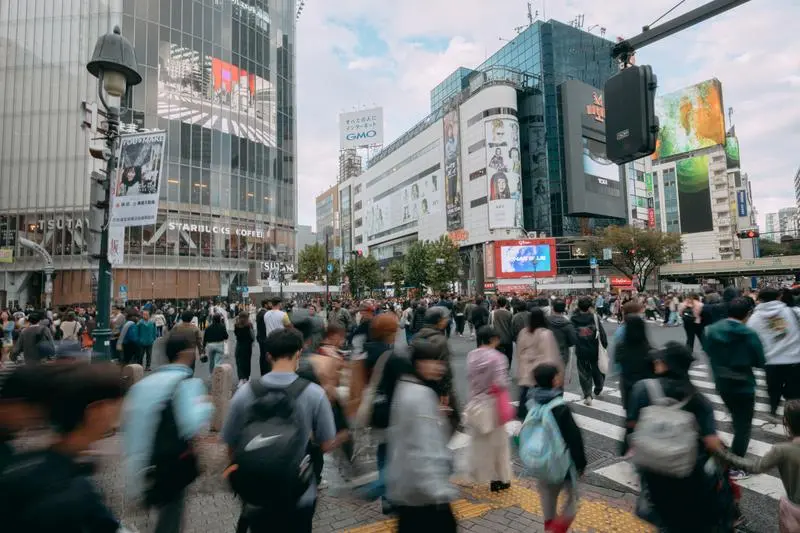
Answer (Tap or click)
1. About 3,000
Explanation:
If you picked 2 or 3 because “the biggest number has to be right,” sorry to disappoint you.
The real number is around 3,000 — still impressive, but not apocalyptic.
It actually doubles the figure for London’s Oxford Circus Crossing, often ranked the world’s second busiest.
Stand there when the light turns green and watch as thousands surge toward the center from every direction.
You might think, “So this is what a medieval battlefield felt like.”
To live in Tokyo, you need the skill to cross this human torrent without bumping into anyone.
Every local is, in a sense, a trained crossing master.
(Still, I wouldn’t mind seeing what twelve thousand at once would look like.)
Q2: The Mystery Beneath the Crossing
Let’s stay right where we are — under the Scramble Crossing.
Something unexpected lies directly below your feet. What is it?
(Difficulty: ★★★★☆)
- A massive underground parking lot
- A river
- A bomb shelter
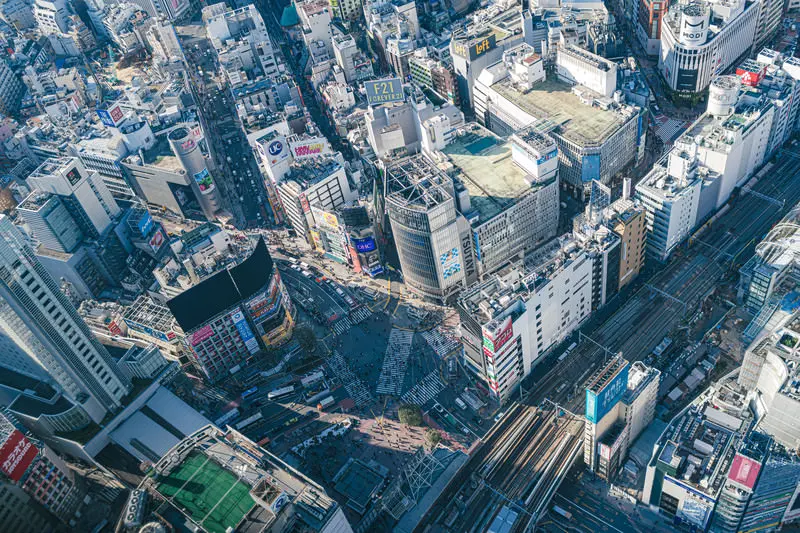
Answer (Tap or click)
2. A river
Explanation:
An actual river flows beneath Tokyo’s busiest intersection — the Shibuya River.
Today it’s mostly sealed inside concrete channels that run from right under the crossing toward Ebisu.
Long ago, this was an open stream — a shallow valley that gave the area its name, Shibuya, meaning “the bitter valley.”
Now, millions of people walk above it every day, unaware of the quiet water moving just beneath their feet.
Even many locals have no idea there’s a ghost river flowing under the heart of the city.
A little eerie, isn’t it?
Q3: Hachikō Goes to Hollywood?
Hachikō, the loyal dog who waited for his owner for years at Shibuya Station,
became famous not only in Japan but also overseas.
In 2009, his story was adapted into an American film.
Which actor played Hachikō’s owner?
(Difficulty: ★★☆☆☆)
- Tom Hanks
- Nicolas Cage
- Richard Gere

Answer (Tap or click)
3. Richard Gere
Explanation:
Hachi: A Dog’s Tale was produced in the U.S. in 2009.
Richard Gere starred as a college professor who owns Hachikō.
While the film performed fairly well in Japan, it saw almost no theatrical release in the U.S. and flopped at the box office.
For Gere, it became a small “black mark” in his home country,
but he has often spoken about his deep interest in Japanese Buddhism — especially Zen — and his affection for Japan itself.
By the way, the real Hachikō isn’t only remembered by the statue outside Shibuya Station.
His taxidermied body is preserved and on display at the National Museum of Nature and Science in Ueno — something even many Japanese don’t know.
If you’re curious, you can visit him there:
National Museum of Nature and Science
Q4: Evolution
For years, Shibuya was synonymous with gyaru — teenage girls in flashy fashion, tanned skin, and platform shoes.
Around the late 1990s, a substyle called “Yamanba Gyaru” shocked the public with its extreme makeup and bold attitude.
But by the early 2000s, something new began to happen.
The gyaru scene started to grow into a larger, city-wide movement.
What did they do?
(Difficulty: ★★★★☆)

- Formed underground communities in back alleys that became linked to crime
- Organized groups with shared interests and strict internal rules
- Formed idol groups that performed under the concept of “idols you can meet”
Answer (Tap or click)
2. Organized groups with shared interests and strict internal rules
Explanation:
During the 2000s, many gyaru circles — or “gyaru-sa” — emerged in Shibuya.
These were groups of like-minded young people who gathered under club-style names, sometimes with surprising discipline and hierarchy.
Some had codes of conduct, membership ranks, and even uniforms.
It was a paradoxical evolution: young people rebelling against a restrictive society ended up creating tightly regulated communities of their own.
In a way, the gyaru-sa movement showed how freedom often comes with its own kind of structure — especially in Shibuya.
Q5: The Birthplace of Trends
Shibuya has always been a cultural trendsetter — a place where new styles and ideas are born and spread across Japan.
Which of the following cultural trends actually started in Shibuya?
(Difficulty: ★★★☆☆)
- Tokyo’s 1990s lounge-pop music scene
- Maid cafés
- Kawaii fashion
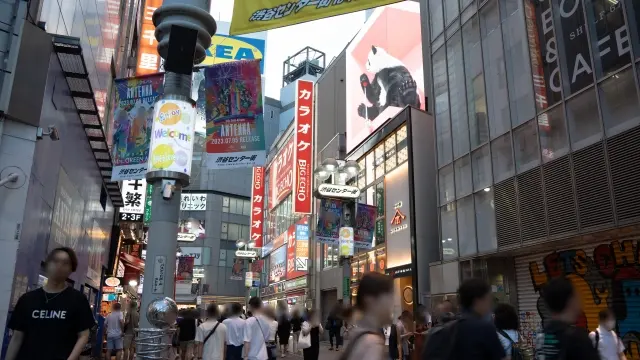
Answer (Tap or click)
1. Tokyo’s 1990s lounge-pop music scene
Explanation:
In the 1990s, stylish record shops around Shibuya inspired a new kind of pop music that mixed French, jazz, and bossa-nova influences.
Overseas, it became known as “Shibuya-kei,” defining the city’s creative reputation long before its famous crossing went viral.
- No. 2: Maid cafés actually began in Akihabara, the center of otaku culture.
- No. 3: Kawaii fashion mainly originated in Harajuku, known for its colorful street styles.
2. After the Crossing
I chose this quiz format to show the many sides of Shibuya — a city that’s more than just crowds and neon lights.
If you ever find yourself with one more day in Tokyo, why not spend it wandering through Shibuya, thinking about its stories, its history, and the culture that keeps it alive?

